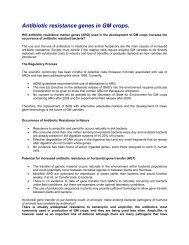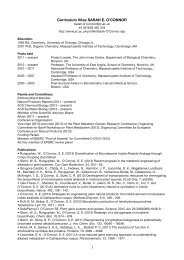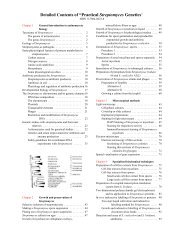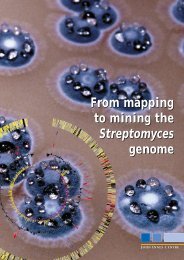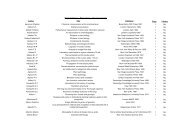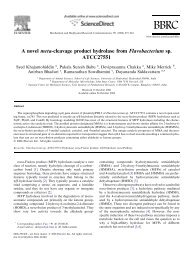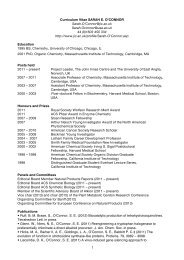1910s Timeline - John Innes Centre
1910s Timeline - John Innes Centre
1910s Timeline - John Innes Centre
Create successful ePaper yourself
Turn your PDF publications into a flip-book with our unique Google optimized e-Paper software.
1932 A landmark in the<br />
‘synthetic theory of evolution’<br />
J B S Haldane publishes The<br />
causes of evolution (1932), a<br />
collection of papers elaborating<br />
a mathematical theory of<br />
evolution, in which he<br />
demonstrates that Darwin’s<br />
theory of natural selection can<br />
be integrated with Mendel’s<br />
theory of inheritance to form a<br />
coherent account of<br />
evolutionary change. For this<br />
work Julian Huxley (in 1942)<br />
lionised Haldane (along with<br />
Ronald Fisher and Sewall<br />
Wright) as a founder of<br />
population genetics and a<br />
leading figure in the ‘modern<br />
synthesis’ or ‘synthetic theory of<br />
evolution’. Historians have<br />
considered the ‘modern<br />
synthesis’ either as a project to<br />
reconcile hitherto rival schools<br />
of biology (especially biometric<br />
and Mendelian approaches in<br />
Britain), or as a device to limit<br />
biological perspectives on<br />
evolution within the context of a<br />
struggle for institutional<br />
resources. Whichever narrative<br />
is accepted, it remains true that<br />
Haldane produced one of the<br />
first works of that enterprise,<br />
and that Britain, the home of<br />
the ‘Oxford School’ of broad<br />
Darwinian thinkers (Haldane’s<br />
first University), was very much<br />
involved in the effort to bring<br />
evolutionary theory into<br />
classical genetics (Harman,<br />
2004, p. 112).<br />
See also:<br />
Julian Huxley, Evolution: the<br />
modern synthesis, London:<br />
George Allen & Unwin, 1942.<br />
William Provine, The origins of<br />
theoretical population genetics,<br />
Chicago: Chicago University<br />
Press, 1986.<br />
Ernst Mayr and William Provine<br />
(eds.), The evolutionary<br />
synthesis: perspectives on the<br />
unification of biology,<br />
Cambridge, Mass.: Harvard<br />
University Press, 1980.<br />
Carla Keirns, ‘Evolutionary<br />
synthesis’, pp. 239-241 in A<br />
Reader’s Guide to the History of<br />
Science, ed. A. Hessenbruch<br />
(London: Fitzroy Dearborn,<br />
2000).<br />
Harman, O. S., The man who<br />
invented the chromosome: a life<br />
of Cyril Darlington, Cambridge,<br />
Mass.: Harvard University Press,<br />
2004. See pp. 109-113.<br />
http://en.wikipedia.org/wiki/M<br />
odern_evolutionary_synthesis<br />
http://students.washington.ed<br />
u/gw0/modernsynthesis/<br />
1933 Rose Scott-Moncrieff<br />
joins the staff and contributes<br />
significantly to the<br />
development of biochemical<br />
genetics<br />
In December 1933 Rose Scott-<br />
Moncrieff joins the staff of JIHI<br />
to pursue her studies of the<br />
biochemistry of flower colour<br />
under the direction of J B S<br />
Haldane. She has already<br />
collaborated with JIHI staff for<br />
several years, and from 1931-32<br />
held the title ‘volunteer worker’<br />
at JIHI. Haldane encourages her<br />
to extend her early research on<br />
naturally occurring<br />
anthocyanins to the quite<br />
separate chemical and genetic<br />
studies of flower pigmentation<br />
that were being undertaken at<br />
the time. Armed with<br />
experience gained in Professor<br />
Robert Robinson’s labs in<br />
London and Oxford, Scott-<br />
Moncrieff is able to use new and<br />
quick qualitative methods; for<br />
the first time it has become<br />
Page 24 of 91



